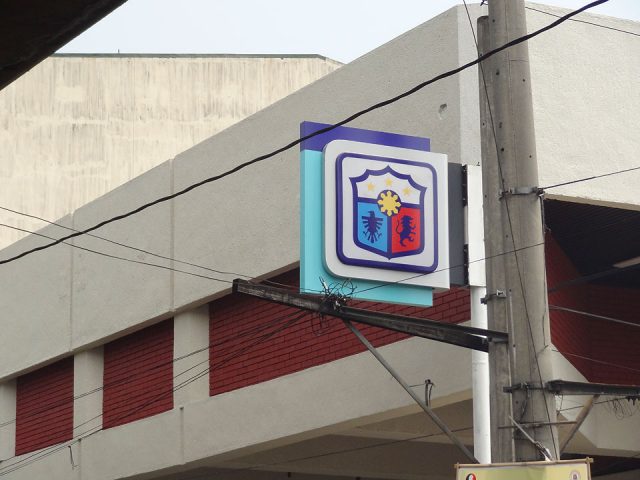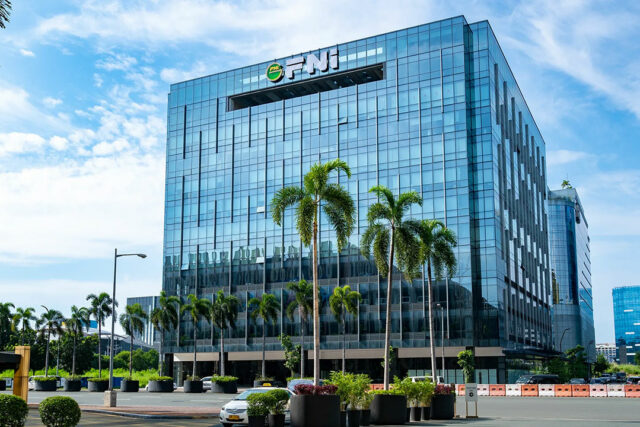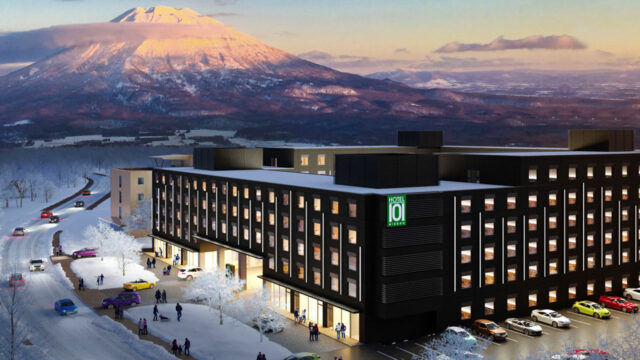It’s an interesting chapter in the October 2024 World Economic Outlook (WEO) of the International Monetary Fund (IMF), and aptly titled: “The Great Tightening: Insights from the Recent Inflation Episode.” True, inflation was far from problematic during the COVID-19 pandemic because even if no one was producing, no one was buying either. The global economy was literally locked down. During the dark days of the health crisis, demand was focused on goods and as the economy recovered and business activities resumed, we saw the shift towards services. The sector required face-to-face engagement between business and its customers.
Looking back, the Fund is now armed with evidence to show that “the pass-through of sectoral price pressures to core inflation and the steepening of the inflation-slack relationship — that is, the Phillips curve — are essential in understanding the global surge in inflation.”
Yes, both the unprecedented support from both the fiscal and monetary authorities contained what the Fund called the economic fallout from COVID-19 — it was first a blessing, and then not long after, it turned into a curse. Based on the results in many advanced and emerging markets, domestic savings rose and as they are drawn down, domestic demand peaked. The result sent many economic authorities rejoicing across the globe because the precipitous decline in output was immediately mitigated and sharp recoveries were recorded in many economies, whether advanced or emerging.
In turn, and this is the sad part, the rise in domestic demand actually compounded the supply-demand imbalances. They were initially masked by the pandemic, but when the new normal set in, and monetary expansion bloated domestic demand, there was no way for prices to go but up, and inflation surged as capacity utilization remained low. With geopolitics motivating the outbreak of war, global food and energy prices had risen and inflation tripled by mid-2022.
That’s how the “Great Tightening” was set up with central banks around the world attempting to deal with the new situation that is largely unfamiliar. Almost all the monetary levers in the central banks’ playbook were tried and tested, but as the Fund correctly pointed out “the simultaneous use of multiple policy levers by many countries, including balance sheet policies, price-suppressing measures, and fiscal policy, required assessment of their joint effects in real time.”
It’s no different from taking different medicines with what doctors refer to as contraindications. If the contraindications are absolute, the effect could be life-threatening. Doctors for sure would advise that we avoid going through such a procedure or take that medication.
As reported by the Fund, the relationship between economic slack and inflation shifted out, steepening in the process. With prices spiking more than wages, inflation gained more momentum than expected when unemployment dropped. With central banks focusing on inflation control, disinflation was not accompanied by more job losses. This must be the reason why, in the Philippines, even the unprecedented 475-basis-point increase in the Bangko Sentral ng Pilipinas’ policy rate did not cause a significant dent in our economic growth. The trade-off between inflation and jobs was not significant.
“Counteracting the inflationary effects of demand in the presence of prevalent supply bottlenecks… presents a favorable sacrifice ratio.”
As if the Great Tightening is not complex enough, this was made even more difficult when central banks did not tighten at the same time. Of course, different economies have different circumstances, for they could be country-specific. But since capital flows could move depending on the kind of monetary policy one jurisdiction is pursuing, there could be some unwanted effects on currency movement which could ultimately lead to additional inflation pressures.
Just like the difficulty the US Fed had in figuring out whether the supply shocks before the Great Tightening were transitory or permanent, our own monetary authorities sat out the escalating food and energy prices as early as 2021, announcing they would not last and monetary policy did not have to respond immediately. As the Fund admitted, even its own forecasts, and presumably many central banks around the world, underestimated the fury of inflation. Its own monitoring showed positive forecast errors which even expanded in 2022.
Annual inflation peaked in 2022 at about 8% in the median advanced economy and emerging markets, extending to median low-income countries before it retreated in 2023.
In the Philippines, there was very little problem in 2020 and 2021 for inflation hit only 2.4% and 3.9% in 2021 even as in the latter year, inflation breached the 2-4% target in seven out of 12 months. It was only in 2022 that the Bangko Sentral realized that while inflation was driven by both supply and demand factors, inflation expectations were being dislodged because the general public was affected by the target-exceeding monthly inflation for most of both 2021 and 2022. Rational inattention exacerbated the market’s appreciation of how inflation was actually misbehaving: people tended to focus on a few items that were commonly bought like rice, onion, garlic, and even salt, all of which experienced sharp price increases. There was a clear case of supply mismanagement and yet, importation of these key commodities was not much of a choice because of high tariffs. Unfortunately, only baby steps were deployed to manage the unkind movement of inflation in the Philippines.
Starting July 2022, monetary policy became more responsive and timelier. It was decisive, with strong signals to the market by delivering a total of 475-basis-point increase in monetary policy and doing them outside the regular policy meeting of the Monetary Board a couple of times. It was correct to shorten the turnaround time for monetary policy.
Many central banks could have also missed out on the downstream effects of high commodity prices. Commodities are inputs to many business activities. In particular, when inflation in energy-dependent sectors increased due to high energy prices even before the Ukraine War, inflation started to rise as well in other energy-dependent sectors, thus broadening its impact on the general economy.
The Fund also made the point that the trade-off between slack and inflation could have been more manageable because of excess household savings, especially during the pandemic. This must have also reduced the sensitivity of households’ spending to interest rate movements, preserved private consumption and economic growth.
Which all leads us to the previous call of the markets for the monetary authorities to ease monetary policy as early as the first two quarters of 2024. The basis: that there was a “clear” trend towards disinflation during the first six months when all monthly inflation rates fell within the 2-4% target. But of course, July’s 4.4% was a big disappointment. The balance of risks then continued to tilt towards the upside.
We hope that the recent siren call for a more significant adjustment in the policy rate will be avoided by the Bangko Sentral considering that inflationary factors, not the least of which is the unpredictablity of geo-politics, may even shift the balance of risks to the upside. Why, the Bangko Sentral had already decided to increase its risk-adjusted inflation forecasts from 2.9% to 3.3% in 2025 and from 3.3% to 3.7% in 2026. They saw, as we see today, potential drivers of high inflation in terms of higher power rates and minimum wages in areas outside Metro Manila. Lower import tariffs are just a one-off incentive to lower inflation. There are sectoral implications of these potential drivers and these are rather unfamiliar territories for many central banks.
While the Philippine Statistics Authority reported that rice stocks were up by some 7% last Wednesday, it also reported yesterday that palay (unmilled rice) output fell 12% in the third quarter of 2024.
Farmers were reported to have cut down on their planting areas due to extreme weather conditions. With rice prices in the world market remaining relatively elevated, we don’t know how importation could mitigate this potential source of price instability.
It would then be prudent for the Bangko Sentral to eschew bringing down the policy rate beyond the usual 25 basis points each policy meeting. It is good to be more careful, watching how previous actions are affecting the transmission mechanism of monetary policy. The US Fed, however independent the Bangko Sentral seems to be of its maneuvering, is now rethinking its decision to ease. It deserves to be closely monitored because of their actions’ potential impact on the peso and inflation. At the beginning of the Bangko Sentral’s easing cycle, the market rejoiced over the decision to ease, and it was the right move. But today, the market seems less enthusiastic. The peso has started to weaken again, the equities market failed to lift with the Bangko Sentral rate cut. A number of sectoral issues, especially in power and food, could have more consequences on the general inflation picture. Central banks are still finding their bearings in terms of better and sharper economic models with appropriate sectoral links, as well as more granular, more sectoral, and high frequency data that would be most useful.
If the Great Moderation lasted for many years, will the Great Tightening return shortly with a vengeance?
Diwa C. Guinigundo is the former deputy governor for the Monetary and Economics Sector, the Bangko Sentral ng Pilipinas (BSP). He served the BSP for 41 years. In 2001-2003, he was alternate executive director at the International Monetary Fund in Washington, DC. He is the senior pastor of the Fullness of Christ International Ministries in Mandaluyong.

![BPI [BPI FACEBOOK PAGE]](https://www.bworldonline.com/wp-content/uploads/2024/04/BPI-BPI-FACEBOOK-PAGE-640x427.jpeg)












